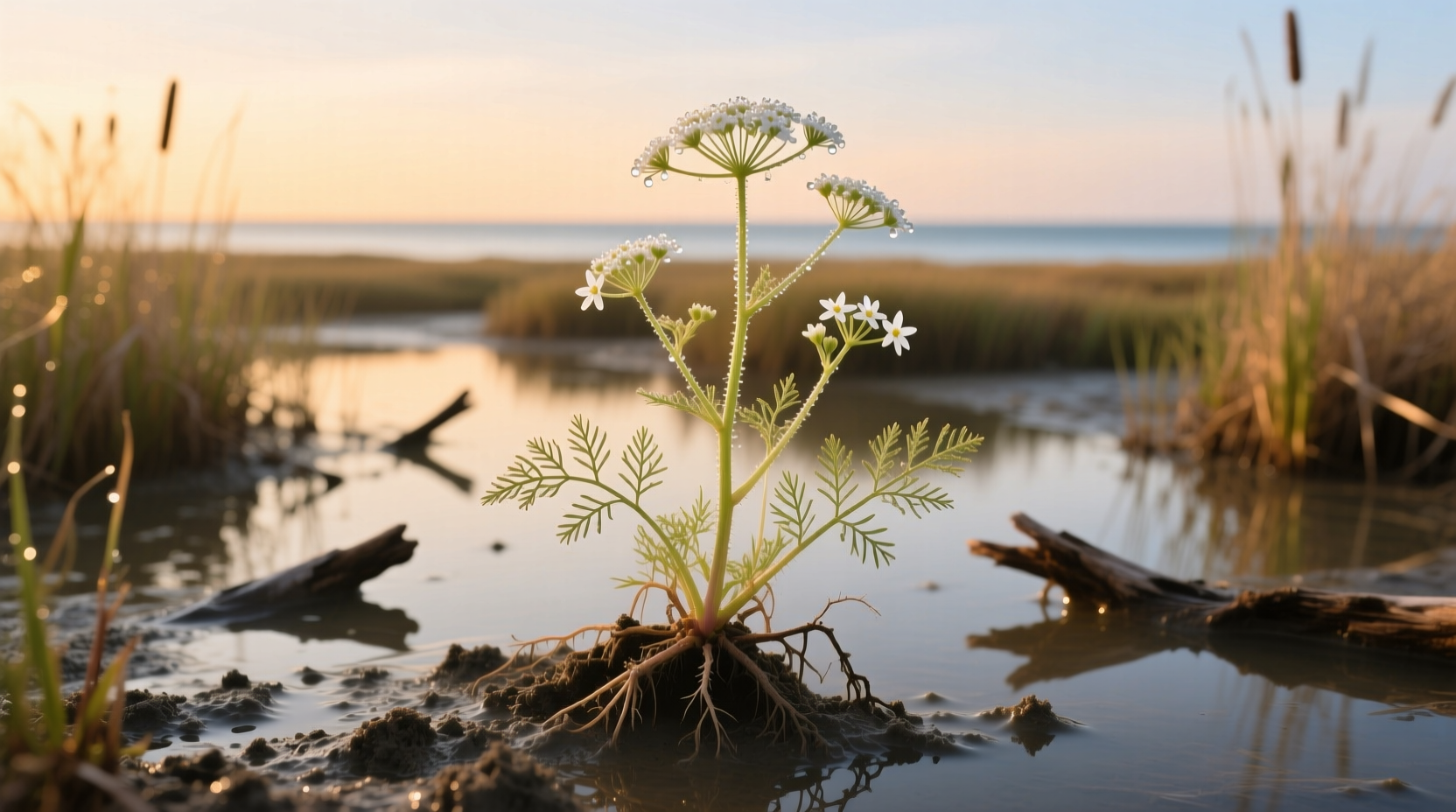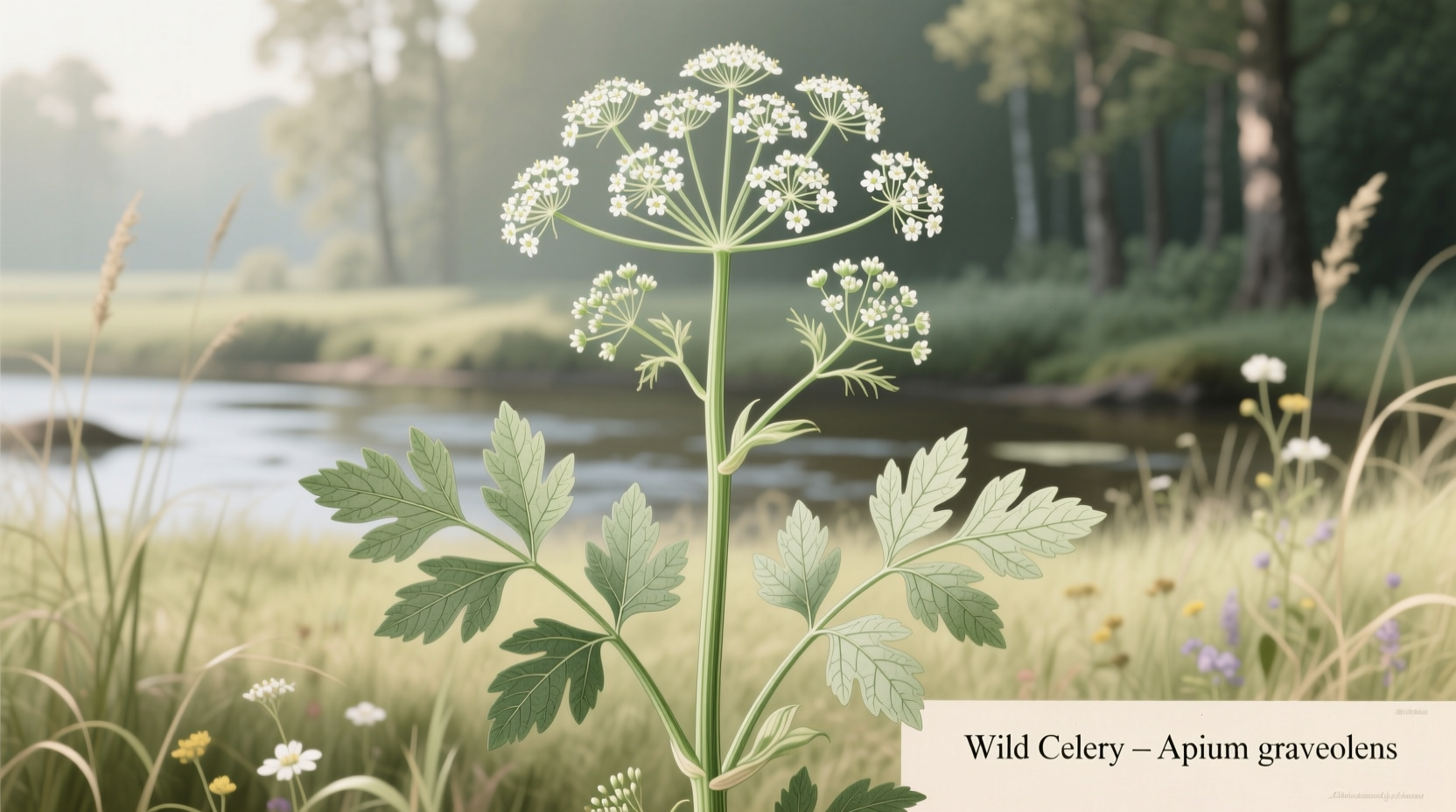Identifying Wild Celery: Your Essential Field Guide
Foraging for wild celery demands precision. This hardy biennial grows 1-3 feet tall with hollow, grooved stems that have a distinctive triangular cross-section when cut. The bright green, pinnate leaves emit a strong celery aroma when crushed—a critical identification feature. During its second year, wild celery produces small white flowers in umbrella-shaped clusters called umbels.
Unlike its cultivated cousin, wild celery thrives in brackish coastal environments, estuaries, and damp meadows. It's commonly found along the Atlantic and Mediterranean coasts, with populations extending to North America's eastern seaboard. The plant blooms from June to October, with optimal harvesting time occurring before flowering when the stems are most tender.
| Wild Celery (Apium graveolens) | Poison Hemlock (Conium maculatum) | Water Hemlock (Cicuta spp.) |
|---|---|---|
| Pleasant celery aroma when crushed | Mousy odor when crushed | Sweet but unpleasant odor |
| Hollow stems with fine grooves | Purple-spotted solid stems | Chambered stems with yellow streaks |
| Triangular stem cross-section | Rounded stem cross-section | Rounded stem cross-section |
| Edible when correctly identified | Extremely poisonous | Extremely poisonous |
Historical Journey from Wild to Table
Ancient Greeks initially cultivated wild celery not as food but as a medicinal herb and victory wreath for Olympic champions. Archaeological evidence from Swiss lake dwellings dating to 4000 BCE shows early humans gathered wild celery, though widespread culinary adoption didn't occur until the 17th century. The transformation from bitter wild plant to mild table celery resulted from selective breeding in Italian marshlands, documented in agricultural records from the 1623 Venice Botanical Garden.
According to research published in the American Journal of Botany, modern celery (Apium graveolens var. dulce) contains only 15% of the psoralens—natural compounds that give wild celery its stronger flavor and phototoxic properties—compared to its wild counterpart. This biochemical difference explains why wild celery requires more careful preparation.
Safe Foraging Practices You Must Follow
Before harvesting wild celery, verify these three critical identification markers: the triangular stem cross-section, hollow stem structure, and distinctive celery aroma. Never rely solely on visual characteristics, as deadly hemlock shares similar leaf patterns. The USDA Natural Resources Conservation Service emphasizes that misidentification causes approximately 12% of plant-related poisoning cases annually in North America.

Harvest only from unpolluted areas away from roadways and industrial sites. Coastal populations may contain higher salt concentrations, requiring thorough washing. The University of California Cooperative Extension recommends harvesting stems before flowering for optimal flavor and safety, as psoralen levels increase during seed production.
Practical Culinary Applications
Wild celery's intense flavor makes it ideal for seasoning stocks, soups, and stews where cultivated celery would be overwhelmed. Chefs at the Culinary Institute of America note that wild celery contains 30% more volatile aromatic compounds than store-bought varieties, delivering deeper flavor in smaller quantities.
For safe consumption, always blanch wild celery in boiling water for 2 minutes before use to reduce naturally occurring psoralens. This preparation method, validated by food safety researchers at Cornell University, decreases phototoxic compounds by up to 65% while preserving flavor. Use the tender inner stems and young leaves in salads, or dry the seeds for a unique seasoning comparable to lovage.
Sustainable Harvesting Guidelines
Ethical foragers follow the "take only 10%" rule—never harvesting more than one-tenth of any wild celery patch to ensure ecosystem sustainability. The Plant Conservation Alliance reports that wild celery populations have declined by 22% in coastal regions over the past two decades due to habitat loss and overharvesting.
When foraging, use sharp scissors to cut stems rather than uprooting plants, allowing regrowth. Avoid harvesting within protected wetlands or national parks where collection is prohibited. Consider planting cultivated celery near your home as an alternative to reduce pressure on wild populations while still enjoying similar flavors.











 浙公网安备
33010002000092号
浙公网安备
33010002000092号 浙B2-20120091-4
浙B2-20120091-4